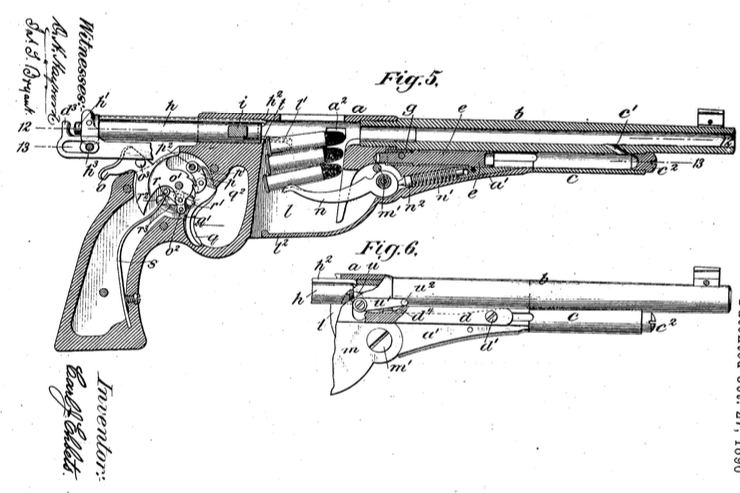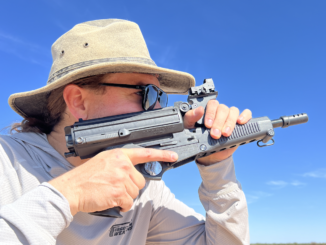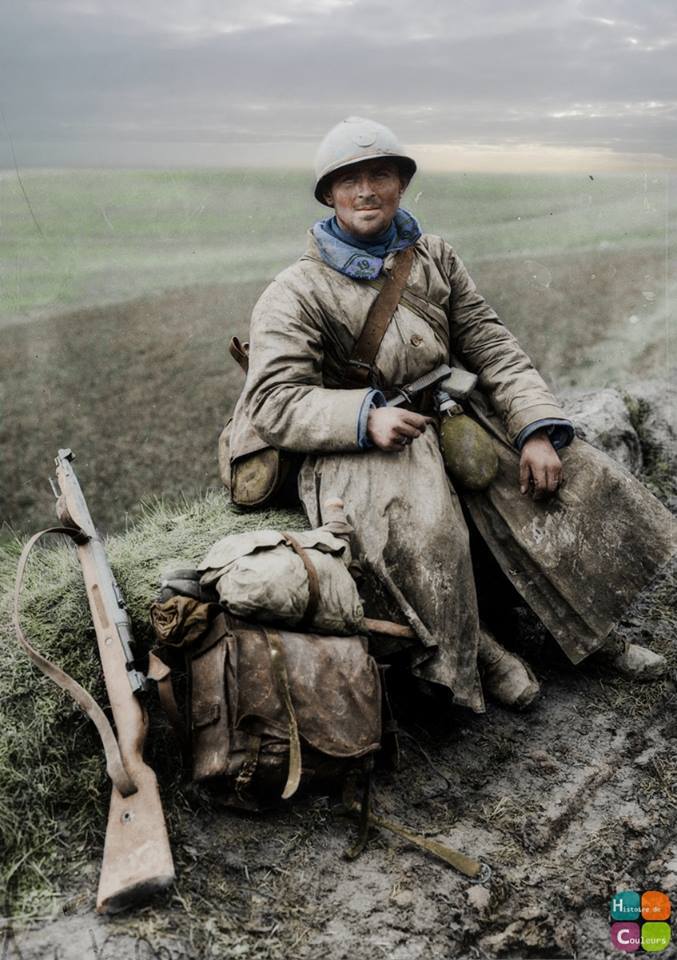I got a really interesting patent in my mail recently, from Othais at C&Rsenal. It’s and idea clearly based on a Bergmann 1894 or 1896 pattern pistol, but instead of being blowback it uses a gas piston. And it’s not patented by Schmeisser or Bergmann, but instead by Carl Ehbets. If you recognize that name, it’s because he was an engineer for Colt in the late 1800s, largely responsible (in collaboration with William Mason) for Colt’s first swing-out cylinder double action revolver.
Now, this gas operated early Bergmann was not ever actually manufactured, so far as I can tell. At best, only experimental prototypes were made, and I have no actual evidence of that. Was this Ehbets trying to use someone else’s gun as a basis for his own improvements? Or was he perhaps acting as Bergmann’s agent in the United States, since he had plenty of experience with the US patent system?
Have a look at the patent for yourself…





The hammer and sear look very similar to the 1895 New Army.
Does this breach lock? I am having difficulty decifering that detail. Also these pistols make me think of the fictional one used by Malcolm Reynolds in Firefly. Partial inspiration for the prop gun’s appearance perhaps? If this is locked breach it could chamber significant cartridges instead of the anemic early Bergman rounds.
Agreed, but I don’t think there’s any protection from bolt-bite on this design. Should the user have too high a grip, he will need to see the doctor and a gunsmith at the same time… or am I wrong?
It is prototype, it might (and probably would) if further developed
is: “(…)it might (and probably would) if further developed”
should be: “(…)it might (and probably would) evolve if further developed”
I believe it is locked. The cross bolt marked i, controlled by the cam track locks into a recess (marked a superscript 2) on the left side of the receiver. The combination of tight tolerances for headspacing and any sort of bolt bounce would create an engineering challenge.
Yes, it looks that way.
It may be a bit finicky (or even fragile) as you say, but theoretically possible. I would not exclude use of gas system from pistols where barrel is 9in and longer, but then you talk already carbine anyway.
Desert Eagle large caliber pistol uses gas for one.
There exist also Wildey automatic pistol using gas-operating principle (also big bore)
M1 Enforcer, is (at least formally) pistol, using gas-operating principle (usage clearly cause due to use in parent design)
Yeah, I read quite a bit about Wildey time by time; they were notoriously poor sellers. Cost is one reason as design is excessively complex. From what I understand is that this and some other pistols evolved by time thru hands of ‘cascade’ of designers which were adding to it, instead of taking clean sheet of paper. Nobody really knows what was original design intent.
Actually, after seeing last lineup of Desert Eagle it seem to me that it is kind of streamlined, although ergonomics are still awkward. They are connected with this Korean outfit (including their church) which gives them backing. Other than that gas on pistol in my books is an excess.
That is quite a harvest of ideas, Daweo and I thank you.
I will take a look at that Russian patent.
I think it is a strong enough lock-up, not symmetrical, which I feel would help accuracy. I was more concerned about reliability, aligning the cross bolt and recess. Possibly it is a good idea, but the cross bolt idea never seemed to catch on. Maybe price?
To yank that cross-bolt out it needs some effort, notabene if all force goes square to locking surface. Then of course, if gas pressure drops in meantime it can go bit easier. For that to happen you need some dwell and half-decent mass in operating rod. It goes round and around, any way you look at it and is not making it any simpler.
If Daweo comes up with some Russian gas-operated pistol, I will change my mind. 🙂
Just one more note on the subject.
This is “forgotten weapons” we looking at here and I should not mix it with current trends. So I am kind of off the line here.
In these days if someone wants to justify some sort of unusually powerful hand-gun he almost needs to design ammunition for it; .44 Mag and such are rimmed shots not really suitable for pistol. Win .45 Mag is still being made though and that is pretty potent shot. Another one which come to my mind is .30 carbine. I can see use for such implement, part of shooting at metal silhouettes, as a handy self-defence tool for people who have business to do in wilderness of N/A or elsewhere in jungles of south. If you encounter large predator, you need to have decisive means and often in tight quarters where rifle is not exactly the best. So, there is some use for them.
“If Daweo comes up with some Russian gas-operated pistol, I will change my mind.”
I found in Russian patent office
Patent No. 2156938 by Каминский В.А.
http://www.findpatent.ru/patent/215/2156938.html
it is gas-operated fixed-barrel automatic pistol
I will not even try to translate it, but if you scroll to end of text of patent, you will see: Рисунок 1, Рисунок 2, … ,Рисунок 10
After you click in one of it drawing will appear, which I hope will explain how it is supposed to work.
“unusually powerful hand-gun”
Problem with high-power automatic pistol is that they don’t offer any grand advantage over similar powered, similar mass revolver unlike normal size: for example FN High-Power offer 13 capacity for 885g when S&W Victory Model offer 6 capacity for 907g – from that it is clearly visible what is more effective, when for example Desert Eagle offer 9 capacity for 1766g when Taurus Model 608 offer 8 capacity for 1769g
“If you encounter large predator, you need to have decisive means and often in tight quarters where rifle is not exactly the best. So, there is some use for them.”
For such I would consider modern version of Lancaster pistol, or more generally I call for:
-four fixed barrels
-moving firing pin
-top-break design
(there exist also other than Lancaster full-filling that conditions, for example Mossberg Brownie, just in smaller size)
Such design has drawback of bigger mass than single-barrel, but cartridge of any shape or size might be used, as long as it don’t break user wrist – using bottleneck cartridge is not a problem like in revolvers, using long cartridges is not a problem like in grip-magazine automatic pistols
Additional though: gas-operated might be useful in class of machine pistols for achieving low RateOfFire
“Does this breach lock?”
Being gas-operated, I’d assume it could hardly be anything but a locked-breech design.
Though I suppose it’s (remotely) conceivable that someone could design a gun with a spring-less magazine so that the gas piston serves only to load a new round in a straight-blowback design gun rather than unlock the breech — but I can’t imagine any sane designer ever coming up with such a queer autoloader unless magazine springs were a patented feature that required a work-around to avoid paying exorbitant royalties.
Just from a quick glance it appears to be a “blow-forward” design, with the gas pressure pushing the barrel and action apart. I can’t tell how the bolt is unlocked (maybe it’ll be obvious when I have the time to actually read the patent)
“gas piston serves only to load a new round in a straight-blowback design gun rather than unlock the breech”
In fact I think that powder gases might be used to propel feed system in belt-fed designs, however as it can be also propelled from moving parts of gun.
Weirdly, despite powder gases are rather hot than cold, Lewis machine-gun used pressure of gases to suck air for barrel cooling.
Seems a bit complicated for a pistol. Heavy, clunky…what’s the point? Maybe an exercise in seeing if it could be done.
The distance between insanity and genius is measured only by success
@Tim:
For weapon of similar era and dubious ergonomic see Clair automatic pistol
https://www.forgottenweapons.com/clair-automatic-pistol/
Now I found that C.J.EHBETS also patented automatic pistol which look more ergonomic:
US Patent 580935 FIREARM
http://www.google.com/patents/US580935
Photo of automatic pistol apparently based on this patent might be seen here (1st from top):
http://peashooter85.tumblr.com/post/42949095718/rareantiqueandbeautifulfirearms-and-now-the
No. That is an 1897 Colt of Ehbet’s design. I have posted the earlier ones photo on Ians mirror facebook post.
I’m sorry, I didn’t see this when I posted below.
“Seems a bit complicated for a pistol.”
At similar time Krnka designed automatic pistol which will become known as Roth-Sauer automatic pistol:
http://www.hungariae.com/RothSau.htm
when it fired cartridge similar to .32 Auto (7,65mm Browning) it was complicated design (recoil-operated/rotation), which was unnecessary for such design. Additionally despite being patented 1900, production not earlier than 1910. In that time simpler blow-back .32 Auto automatic pistols become available in market, so it is not surprising that Sauer soon offered simpler designer, which become known as Sauer 1913 (and firing wide-spreadily available .32 Auto cartridge)
It seems clear that the”i” part works as a side block lug .that is depress in its travell by the piston rod . Even more it might work as a firing pin block that prevents out of battery discharge . Its a very intresting design probably erlyer than the side tilting bolt of the shmeisser design for bergmann pistols. A more simple short recoil sistem.
At least one prototype was made under U.S. Patent No. 570,388 (filed 29 Oct 1894, granted 27 Oct 1896). There’s a photo of it on p. 266 of Handguns of the World: Military Revolvers and Self-Loaders from 1870 to 1945 by Edward C. Ezell (Stackpole, 1981). It fired a rimmed revolver cartridge, which probably explains the Bergmann-type feed system.
His second design, also shown on the same page, was U.S. Patent No. 580,935 (20 Apr 1896). It was a blow-forward design similar to the 1894 Mannlicher, and also using a rimmed revolver round. From the size and shape of the ejection port, I suspect the round in question was the .38 S&W.
cheers
eon
“experimental prototypes”
I don’t want to be Besserwisser here, but isn’t that pleonasm? Can prototype not being experimental?
Well some pre-production war planes got used in action. The Martin B-26 Marauder was put into production with the first production aircraft serving as prototype, with absolutely no prior subject flown to check whether or not the design was valid. This means that there was no “XB-26” prototype plane! Other aircraft of the USAAF had prototypes with the designation prefixed with an X to set them apart from main production models. And strangely all examples of the Heinkel He-100 were prototypes but used operationally to defend the Heinkel facilities from American bombers.
That aside, if this gas-operated pistol had not been consigned to history, perhaps some operational prototypes could have been evaluated beyond laboratory conditions. Did I mess up?
Re USAAF aircraft, there also was no XB-25, just a single YB-25 (Y=Service Test), because the B-25 was developed directly from the prewar NA-40 attack plane prototype, which was owned by North American Aviation and never received a military designation. The major difference between the two being a wider fuselage on the Mitchell and an “airliner-style” side-by-side cockpit, rather than the NA-40’s tandem “greenhouse” which looked a lot like that on a T-6 Texan trainer.
There also was no “XC-47”, being a development of the commercial Douglas DC-3C. The nearest they came to that was the single XC-47D, which was a standard C-47B fitted with a pair of Edo floats for sea-based testing.
In wartime, there isn’t always time to dot all the Is and cross all the Ts in the paperwork.
cheers
eon
Even if there were not officially named Ysomething or Xsomething, there might be considered prototype on basis on function if were used to test or fine-tune some solutions.
And remember: Bureaucracy lives in own-created virtual world.
Colt made a prototype similar to this. I saw a photo of it once, long before the internet, so I know it existed, at least in fuzzy form in my mind. It was very long and delicate looking. Do you know the one I am talking about?
For similar-era, gas-operated, US-patented automatic pistol, see
US Patent 580923 Firearm
https://www.google.com/patents/US580923
Ehbets also had a potato digger inspired handgun. US580935 granted the same day, but applied for later than JMB’s.
Sorry bp, I have written the same with your post. Noticed later.
This is John Browning’s design working in same gas actuation principle with Ehbet’s but in reverse direction. Both patents were published within the same day but Browning’s filing date was some one year earlier.
I posted the photo on your mirror facebook post. Same pistol.
Any ideas/suggestions on the overall length or height of this pistol? Now that I have the photo I would like to have it cut out on a laser cutter so I can put it on my wall as a silhouette.
You can be assured of one thing, Carl J. Ehbets was working here in the interests of the Colt’s Patent Fire Arms Manufacturing Company and no other. As Ian mentioned in his previous Bergmann videos, this design had limitations on power vs. bulk, and on the effectiveness of its disconnecting mechanism, both of which are addressed by this patent. I have read in books on the subject that Ehbets was Colt’s “patent expert” at this time. I can’t be sure outside of some evidence in corporate documents, but I imagine that he is acting here as a “non-practicing entity (NPE)” likely intending to block development of this pistol in these directions through peremptory action.
Suddenly occurs to me those are intended to be .38 long colt cartridges, the new standard for the Army in 1892? This would therefore suggest the size of the weapon.
Stumbled across this doing research on gas-operated handguns – not for patent law but for a criminal case.
Outside of the Wildey, as far as I can tell, this just isn’t a thing. Any other examples?